There were three key individuals involved in the creation and ascension of WNEW to the position of being one of America’s greatest-ever radio stations in the middle part of the 20th century.
- First, there is Arde Bulova, whose immigrant father was a designer of watches and founded the Bulova Watch Company in 1875. Arde would succeed his father as head of and principal owner of the watch company. I list him first as he was the money person, wealth gained from taking over his father’s very successful watch business … and he had a love of this relatively new medium of radio.
- Next is Milton Biow, who started his own one-man advertising agency in 1917 and is recognized as a pioneer in the modern school of advertising. His Biow Company would go on to become one of the largest advertising agencies in America.
- Then, there was the lady who is the prime focus of this story, Bernice Judis. Tudie was born into a well-to-do family, so her early adult years were devoted to socialite activities and travel. She also loved playing golf and had won a women’s golf championship. And, at age 34 — as noted by Richard Pack — she knew both Bulova and Biow, so they knew she was smart, recently divorced and needed something to do.
WNEW’s original home was at 1250 AM, a frequency occupied by a northern New Jersey radio station beginning in 1922, WAAM in Newark. Since most stations in the early years operated just a few hours a day, there was no argument when the government assigned another station to join them on the same frequency, which occurred in 1925 when WODA licensed to Paterson, New Jersey, began operations. By the early 1930’s, WAAM was owned by the short-lived Amalgamated Broadcasting System, a venture led by vaudeville comedian and early TV star, Ed Wynn.
In 1933, Bulova and Biow acquired the assets of Amalgamated and WAAM and merged with WODA — a process that had already begun — creating the WODAAM Corporation, which included Richard O’Dea, WODA’s owner, creating a three-way partnership. The station had its official launch as WNEW on February 13, 1934 … the call letters being suggested by Milton Biow simply because the station was “new” … not standing for New York, New Jersey or even the first three letters of Newark … a city the station would escape before too many years passed.

Over the years, quite a bit has been written about this legendary station and its history in various publications, including a tribute book, titled Where the Melody Lingers On, published on its 50th anniversary in 1984. (I will cite these various sources at a later time.) My goal here is to present the station’s story in a fairly straight-forward chronological manner as accurately as I’ve been able to ascertain it, taking you through the Bernice Judis years, which concluded in 1954.
WNEW Broadcasting Begins…
The premiere broadcast on that February 1934 evening was very inauspicious, except that in a publicity-seeking move, it was arranged for President Franklin Roosevelt to push a button in the White House to signal a singer to perform the national anthem. Otherwise, the entertainment which followed was provided by the staff musicians left over from the predecessor station.
There are several at-times-conflicting stories relative to these early years of WNEW, including the timeline of how it developed into the dynamic powerhouse it became.
Not long after the launch, it was evident that a “spark plug” was needed to “kick things up a notch.” And, it appears that Milton Biow’s wife engineered the hiring of Tudie. The ladies were good friends and Mrs. Biow felt she’d be an asset, so was hired and given the title of program director. It was soon evident she was a good choice, so by the end of 1934 she had been elevated to general manager.
While building the station was more of an evolutionary process than an overnight creation (as some writers would make you think), with Tudie at the helm and Milton Biow contributing ideas, not a lot of time was wasted in creating audience-attracting programming. When you are an independent and without the resources the big network stations, you had to be creative.
First to Air with the Lindberg Kidnapping Trial
One such opportunity came in the opening days of 1935 with the murder trial of Bruno Hauptmann, charged with kidnapping and killing the baby of famed aviator Charles Lindberg, which drew national attention. WNEW sent a reporter and engineer to provide live reports from the courthouse in Flemington, New Jersey. While microphones were not permitted in the courtroom, these innovative guys managed to set up in a men’s room close by, thereby beating most other stations to air with the latest developments.
Then, what to do to fill air time between reports? At this point in time, most music broadcast on radio still was provided by live musicians. However, it wouldn’t be easy to have a live orchestra standing by to fill these spaces of unknown length. Meanwhile, it just so happened that only a month earlier, a young announcer had arrived east from California and had wangled an audition with Tudie … who loved his smooth delivery and hired him on the spot as a staff announcer. His name … Martin Block!
The Origins of the East Coast Disk Jockey
Having lived in Los Angeles, he’d listened to a gentleman named Al Jarvis on KEWB, the Warner Brothers radio station in Hollywood. Al Jarvis was a D. J. — a “disk jockey,” a term conjured up by nationally-known newspaper columnist Walter Winchell — as he played phonograph records! Martin suggested to Tudie he go down the street and buy a few records, which he’d play between reports … “done deal, do it,” likely making WNEW the first station on the east coast to play recordings of the popular songs of the day performed by the popular artists of the day.
The musical segments drew such positive listener response that Martin was given three quarter-hour segments per week to create his version of what Al Jarvis had created out west and called “Make-Believe Ballroom.” As the old saying goes, “from small acorns, great oak trees grow.” If you are not familiar with Mr. Block and the “Ballroom,” you’ll learn about it as Richard Pack picks up the story in Chapter Three of A Radio Station and its Mistress!
Pioneering 24-Hour-A-Day Broadcasting
The next evolution came in late in 1935, when Walter Winchell includes in one of his newspaper columns a suggestion that some radio station should stay on throughout the night to entertain those thousands of persons who were working those “graveyard shift” hours. Always ready for action, Miss Judis quickly made the move to pioneer 24-hour-a-day broadcasting by launching the Milkman’s Matinee!
The Record Industry Law Suit
As the calendar turned to 1936, thinking that the playing of recordings on the radio would severely cut into the sales of phonograph records, WNEW became a defendant in a suit filed by orchestra leader Paul Whiteman and others to prevent them from being aired, as all record labels carried the phrase “Not Licensed For Radio Broadcast.” The judge quickly ruled that if the station purchased the physical record, it had the legal right to play it. Hence, 24-hour-a-day broadcasting rolled on and more and more hours of radio time became filled with recorded music rather than live performances. Bernice Judis’s own tastes had told her early on that what the listener cared most about was hearing their favorite songs sung by their favorite artists … they didn’t care if that performance was live or came from a recording!
Over the next few years, much of the station’s daytime programming — other than Martin Block’s expanding “Ballroom” show — would continue to come from 15-and-30-minute live music — of many styles including country-and-western — and spoken word presentations. Evenings would be filled mostly with remote broadcasts from venues all over the metropolitan area where there were live bands playing.
1930’s Local Radio Station Competition
Throughout the later 1930’s period, there were two dozen radio stations operating in the New York metropolitan area, including a few licensed to Newark and Jersey City, New Jersey. Of course, not all operated near full-time and a number were on frequencies shared with another station. Yet, in addition to the four “network” stations — all operating with 50,000 watts — there were at least two independents, WHN and WINS, both with far greater resources, higher power and at better dial locations than WNEW. Still, as you see in this early 1939 WNEW ad, the entertainment weekly tabloid Variety called WNEW the leading Independent station in the Big Apple.
The Sharing of Radio Frequencies
Add on another handicap … even having been created from merging two stations, WNEW did not control its 1250 frequency 168 hours a week … it still shared time with WHBI. Even though the latter’s hours of operation were limited, it still was disruptive. Most articles state that WHBI operated all of Sunday plus Monday evening. It wasn’t quite that straight-forward … you can read the schedule in the WNEW information listing above.
Taking effect on March 29, 1941, the North American Regional Broadcasting Agreement — as signed by the United States, Canada, Mexico, Cuba, the Dominican Republic and Haiti — brought about a major re-structuring of the AM band, with most stations — other than a few at the lower end of the dial — changing frequency. WNEW and WHBI were re-located to 1280, but still sharing time … but this was to change before the end of 1941. “Stay tuned,” as they say in radio parlance.
Prior to the 1942 ruling by the Federal Communications Commission which required RCA to sell one of its two radio networks — the Red or the Blue — and related stations, companies and individuals could own more than one station on each band in a market (which, of course, was again authorized in 1996). It just so happened that some years earlier, Arde Bulova had also purchased New York City station WOV, operating with 1,000 watts at 1100 on the dial. After the re-structuring, it was moved to 1130 and granted a power increase to 10,000 watts and an eventual 50,000 watts.
With WOV’s programming being primarily ethnic in nature and its audience mostly within the city, it had no need for more power. When WOV’s new 10,000-watt transmitting facility was completed, a little “magic” was performed — with the programming lines from the studios simply being switched to feeding the other’s transmitter, and the FCC having authorized the exchange of call letters between the frequencies — beginning on December 1, 1941, WNEW took up residence in a new home which much expanded coverage, granting it the ability to truly spread its wings and fly!
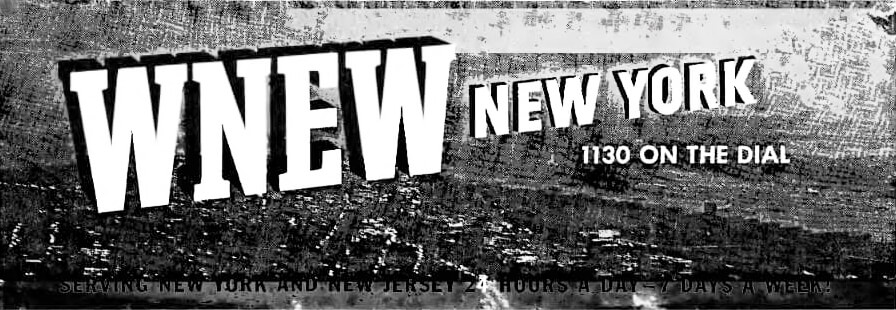
I welcome your comments, questions and suggestions regarding this story and others published here each Thursday. Thank you for reading!
Next week, April 18th, we’ll have a Second World War “Special Anniversary Report” in this space — then, two weeks from now, we’ll continue with Part Three of this grand “Mistress” story!
Image Credits: "Bernice Judis" photo credit: TIDE
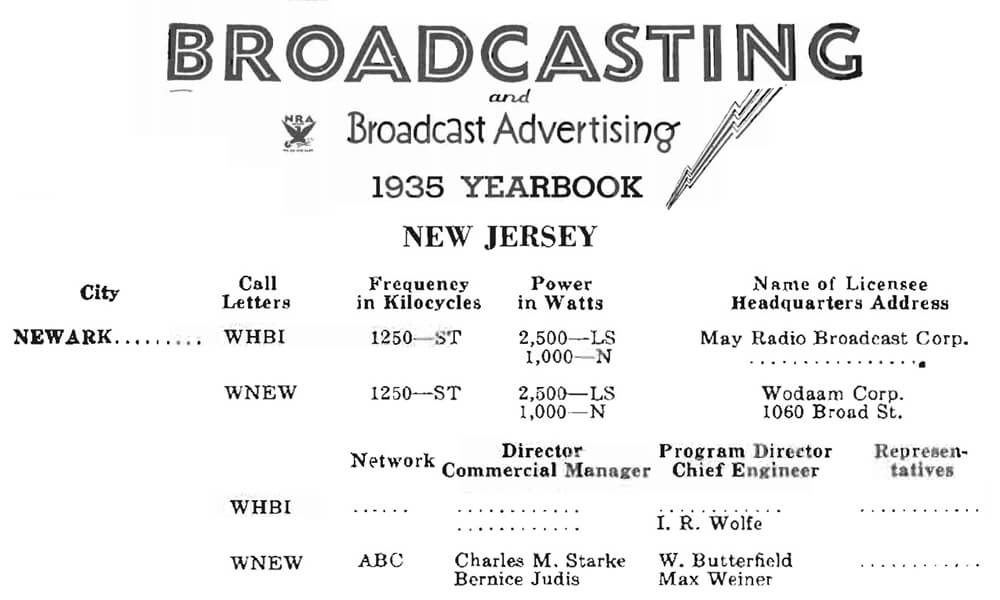
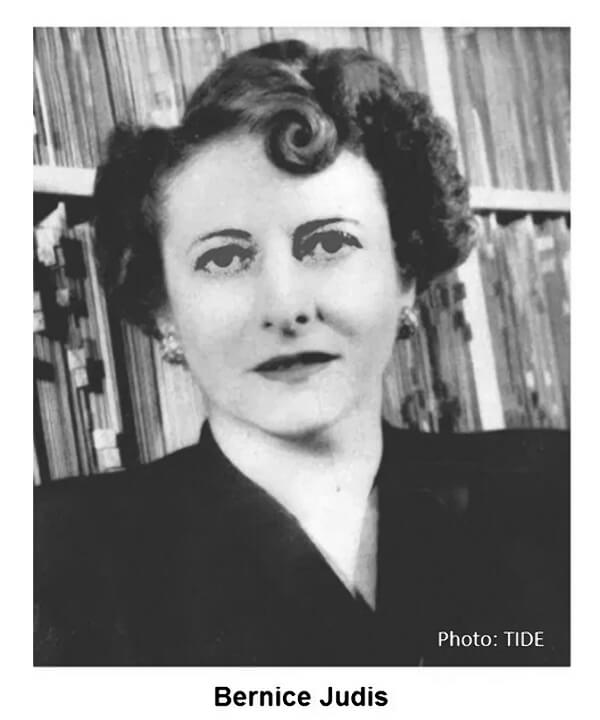
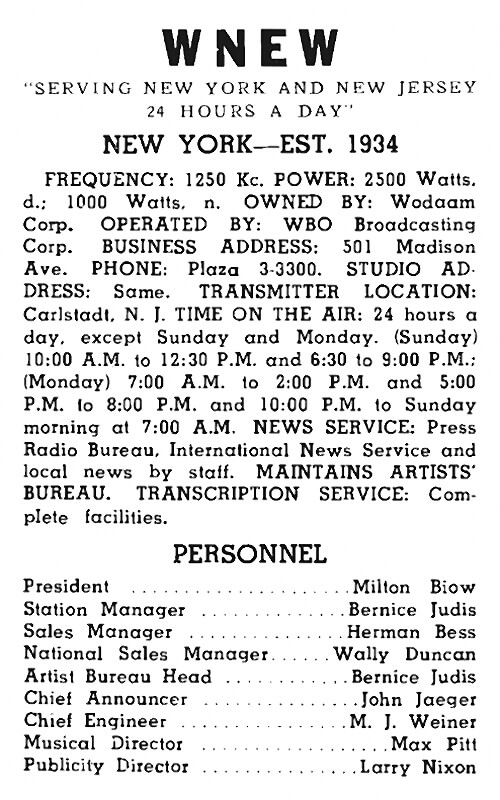
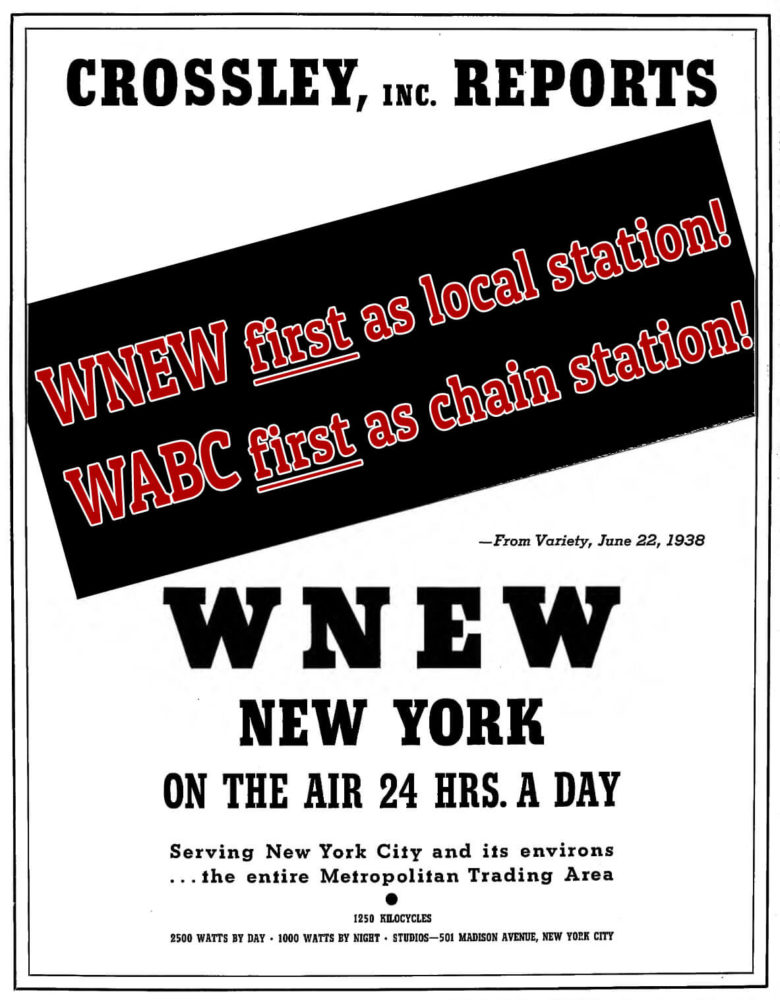
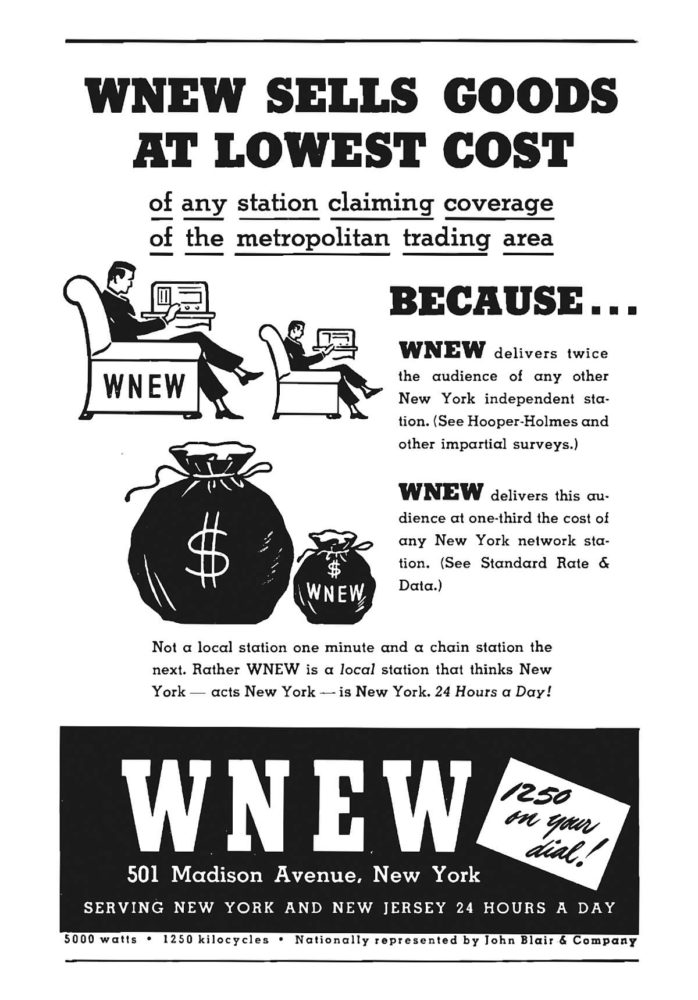

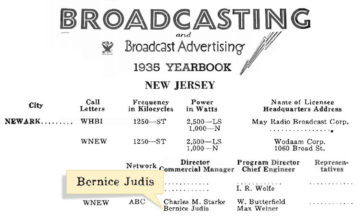
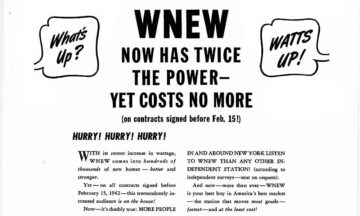
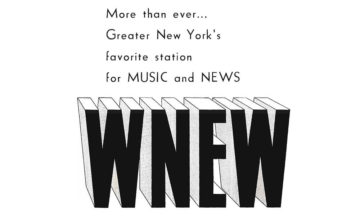
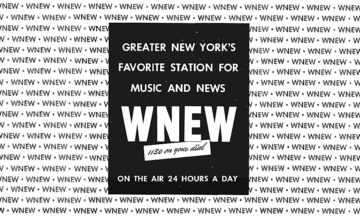
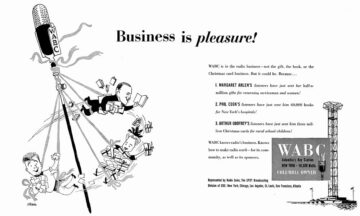
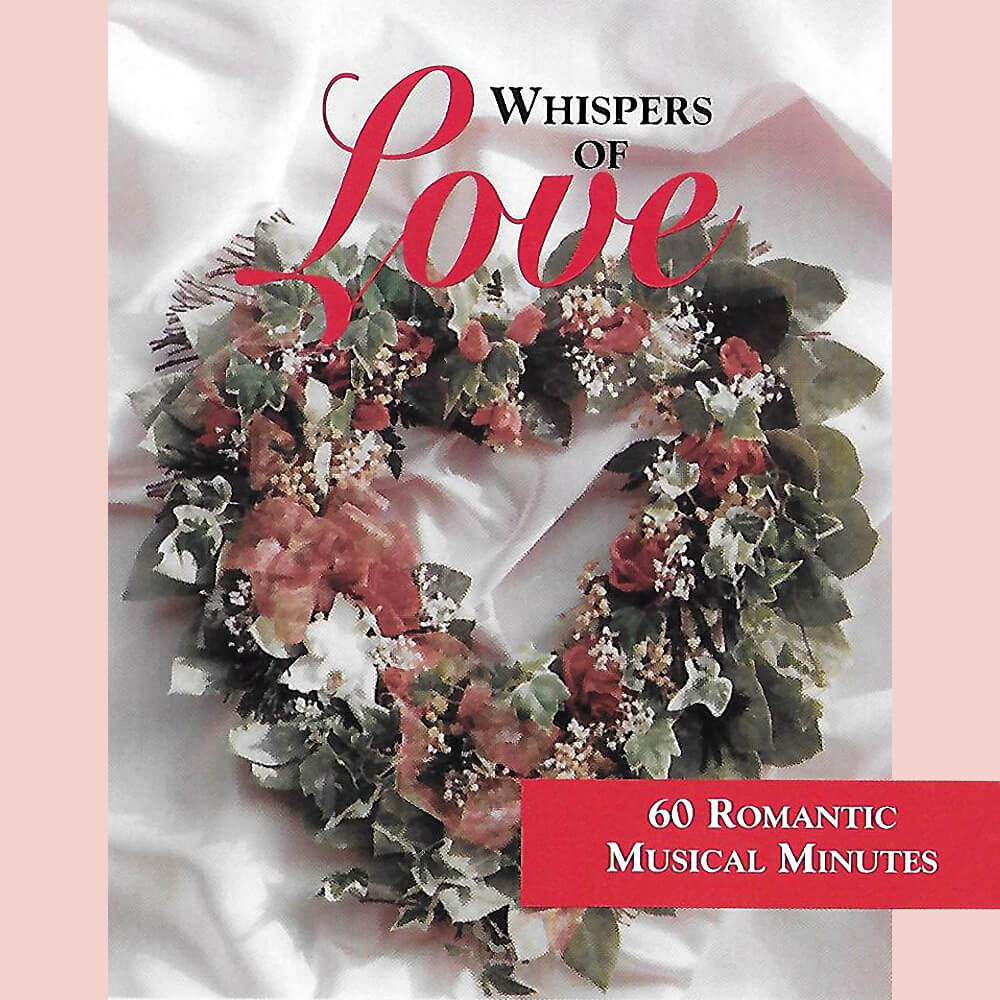
Marlin…
I thank you kindly for this series on WNEW. As a Bronx-born boy, lifetime broadcaster (most in journalism), and current host of a weekly old time radio show in SW Florida, I'm a broadcast history buff and love reading "inside stuff" such as this. Looking forward to Part III.
Thank you, Jody … it’s been a joy to write this, although took a lot of hours sorting through all of what’s available regarding the station, to make sure I printed the most accurate information to be found. Frankly, until I read Richard Pack’s 1983 article, I had never heard of Bernice Judis … yet have admired her and felt a “kinship” with her ever since!
Historical note: This is an experimental slow speed (30 rpm) electrical recording, made for an experimental pre-recorded radio broadcast. The one-sided 10-inch diameter disc record has three recorded takes, about 17 minutes total duration: https://archive.org/details/waam-newark-nj-edison-transcription-test
1915 RADIO PIONEER Ira Rogers Nelson Jr. and his father worked with Thomas Edison on the development of this recording system. These recordings are of great historical value. WAAM, Newark, began broadcasting in 1922. At that time it was the second most powerful station in the East.
This Radio program was for WAAM, Newark, New Jersey – Performed by: John A. Scott – organ, vocal and Mr. Greenfield – vocal. Recording date: April 12, 1928 Location: Columbia Street Studio, Edison Laboratory, West Orange, New Jersey Record format: Edison Diamond Disc
As described in this series of articles about the founding and evolution of a new station under the leadership of a young lady named Bernice Judis, WAAM in 1934 would merge with another station and become WNEW (AM).